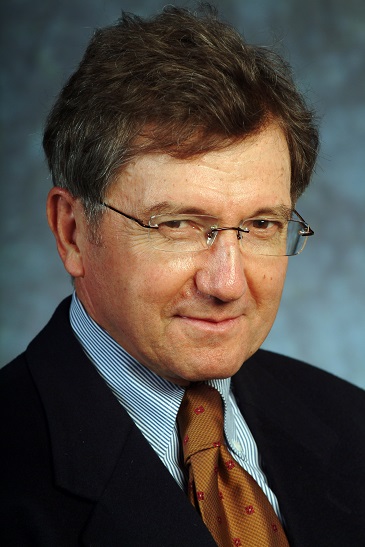
A University of Houston physicist has been recognized by the Society of Exploration Geophysicists (SEG) for pioneering work in extracting useful information from seismic data.
Arthur Weglein, Hugh Roy and Lillie Cranz Cullen Distinguished University Chair in Physics, will receive the society’s highest honor, the 2016 Maurice Ewing Gold Medal, in recognition of his work on the inverse scattering series and his writing and teaching.
The idea for removing multiple reflections without subsurface information wasn’t accepted when Weglein first suggested it in the 1980s. “It was originally considered controversial,” he said. “It was unorthodox. Now it’s become fully mainstream.”
Weglein came to the UH College of Natural Science and Mathematics in 2000 following a career in industry and heads the Mission-Oriented Seismic Research Program, which includes a research professor and eight graduate students, in addition to himself. The lab, a petroleum industry consortium and research program, works to identify and solve the highest priority seismic exploration and production challenges, whose solutions will have the biggest positive impact on our ability to successfully drill exploration and production wells.
Paula Myrick Short, UH senior vice president for academic affairs and provost, said the award is evidence of Weglein’s success in the field.
“I am happy to see this recognition of Dr. Weglein’s work on the inverse scattering series,” she said. “It offers an important validation of his perseverance in the field, as well as of the translational value of research performed on university campuses.”
Weglein said the one-in-10 success rate of drilling frontier exploration wells in the deepwater Gulf of Mexico is evidence that fundamental new and more capable and effective concepts and methods of processing seismic data were needed. “Every seismic method is based on and makes assumptions,” he said. “When these assumptions are satisfied, the methods work and are effective. If they aren’t satisfied, they don’t.”
His research group works to identify assumptions and requirements behind current seismic methods that can contribute to drilling a dry hole. They then develop methods that either help to better satisfy and provide those requirements and prerequisites or develop entirely new concepts and methods that do not make those assumptions and do not have those requirements. Working with the inverse scattering series, he developed a way to process seismic data that did not require any knowledge about the subsurface to achieve any seismic objective, including not needing information above the reservoir to locate and to delineate a reservoir.
Weglein describes it this way: Someone bouncing a ball against a distant wall can determine how far away the wall is if they know the velocity of the ball, as well as how long it takes for the ball to travel to the wall and back.
Substitute “knowledge about the subsurface” for velocity, and you have Weglein’s discovery.
“It’s a way of understanding the math-physics, the single message and promise in the inverse scattering series that others did not,” he said. “All seismic processing objectives can be achieved directly and without subsurface information. That's acceptable today for removing multiples, but other and more ambitious processing objectives, that derive from the same exact logic and math, remains elusive and difficult for many to grasp. In the near future, it will bring new concepts and methods and the needed next generation of seismic imaging and inversion capability and effectiveness to address current outstanding issues and meet pressing and prioritized challenges.”
Weglein received the Townsend Harris Medal from CCNY in 2008 and the SEG Reginald Fessenden award in 2010 for this work; the Maurice Ewing Medal recognizes the positive impact of his research, along with his writing and teaching.